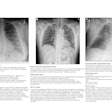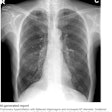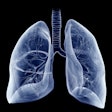X-ray will continue its drive to digital at the 2008 RSNA show, with a range of products on display demonstrating the ongoing maturation and expansion of the technology.
At one time, imaging facilities had two main choices of digital x-ray technology -- computed radiography (CR) and flat-panel digital radiography (DR). CR had a reputation as an established technology that offered lower cost of acquisition, but that left buyers for the most part stuck with their existing workflow. The arrival of DR offered the promise of major changes in workflow, but at a price that only the largest facilities could afford.
Those lines are beginning to blur as vendors offer CR systems that have a workflow more like that of DR. At the same time, vendors are coming up with new DR technologies that can be retrofitted to existing equipment, lowering the price of acquisition. New DR applications and functionality also are becoming available that were never before possible with conventional radiography.

Computer-aided detection (CAD) is being applied to digital x-ray images in the hope of making the modality more competitive with CT as a lung screening modality. Meanwhile, several vendors have developed unique slot-scanning DR systems that provide trauma and musculoskeletal imaging at radiation doses much lower than conventional DR units, while other firms will highlight systems that allow for extended-length imaging for full lateral spine scans, with and without stitching technology.
One of the biggest stories at the meeting will be the continued growth of wireless DR. Wireless portable DR units already have been on the market for several years, and one vendor recently introduced a flat-panel DR detector designed to fit into the bucky of a conventional radiography system, much like a CR cassette.
Also look for x-ray devices and software that manage radiation dose and optimize the imaging process via automated features, even eliminating the need for users to define and select image processing for each body part and orientation.




















